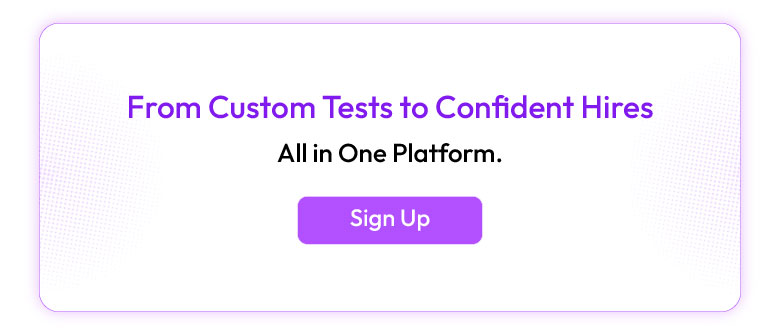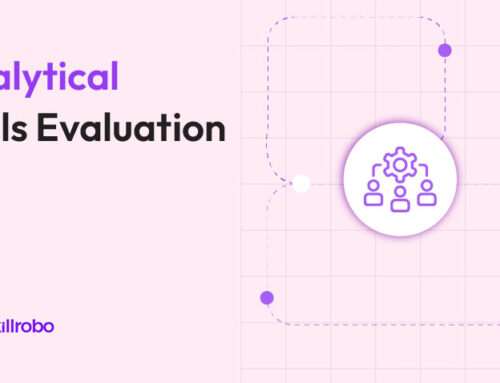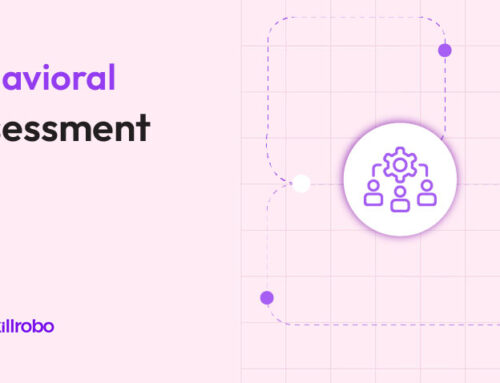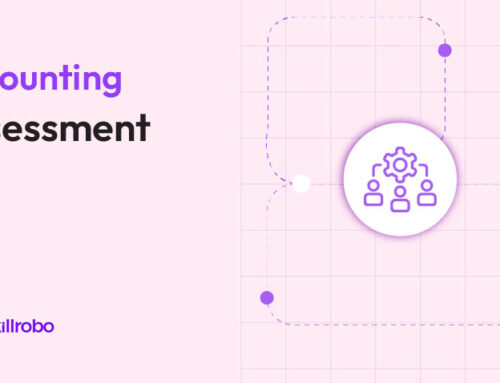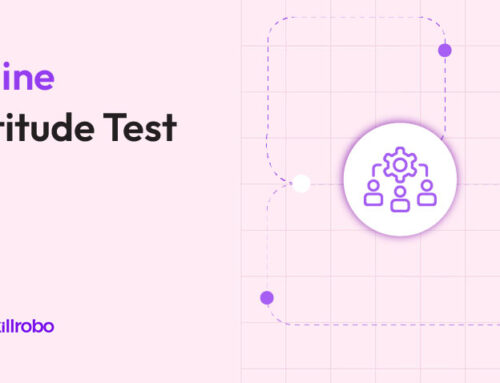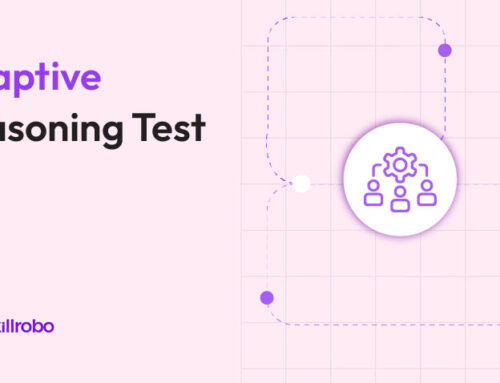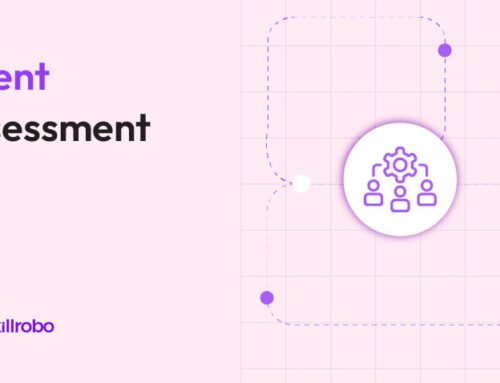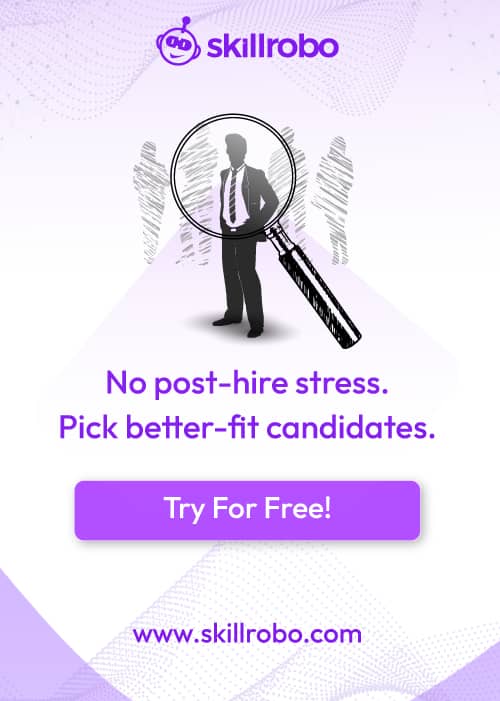Table of Contents
Related articles
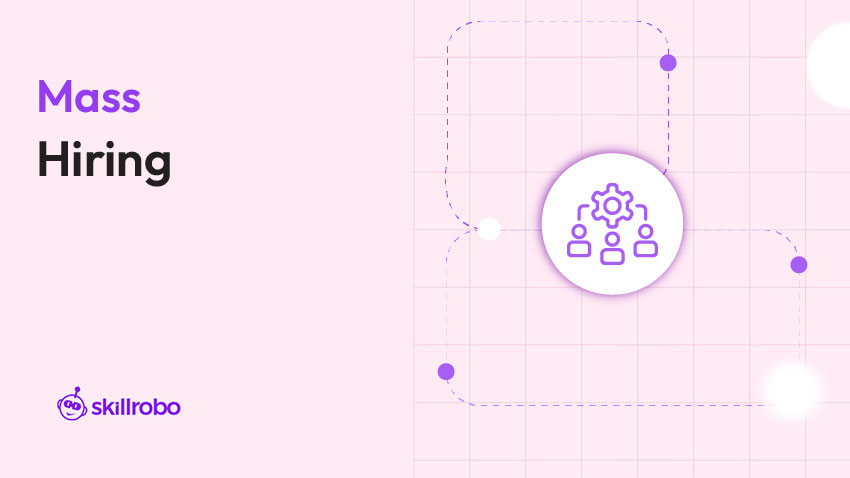
Let us picture a situation where your organization needs new, skilled, and talented employees to drive productivity in all aspects. Mass hiring can be a perfect solution in such a situation. Mass hiring is not a new concept to any organization. There are several instances where an organization chooses this particular form of hiring.
Mass hiring is one of the best strategies to grow a company’s workforce rapidly in the hopes of making a powerful impact in the respective industry. However, this strategy comes with multiple challenges that might put the organizations at greater risk.
Hence, strategic planning is a prerequisite. This write-up will unfold the challenges faced by organizations in mass recruitment and also help explore some of the important mass hiring strategies that will offer recruiters a smooth hiring process.
Defining Mass Hiring
Popularly known as bulk hiring or high-volume hiring, the concept of mass hiring is the practice followed by organizations to fill a huge number of vacancies in a short period. This is practiced in several situations. For example:
- Due to the opening of any new department or branch at a different location, organizations have to fill a large number of positions
- In case there is a new client’s project launch or any future needs
- Due to some seasonal or event-based increase
- Backfilling in the case of high attrition
Mass hiring is a process that involves a lot of planning, organizing, delegation, infrastructure, and engagement across the different departments of the organization to acquire high-quality and skilled hires with excellent candidate experience.
The mass hiring process does not have a fixed number of hires. Every company has many candidates that they wish to onboard in the desired period. Mass hiring cannot be generalized to a fixed framework of definition.
For instance, consider a company with 20 employees that hires only one person each year. When they make 3 hires in one month, it can be classified as mass hiring. On the contrary, a big company like Google, which generally hires a thousand candidates every month, cannot be classified as mass hiring. Hence, the point to be noted is that the outcome is not what matters, but the process.
Mass Hiring vs. Traditional Hiring – How are they Different?
Firstly, a stark difference is that a traditional hiring process generally focuses on filling just one to a few vacancies at a given time, whereas mass hiring focuses on filling a large number of vacancies. Secondly, the time taken to complete both forms of hiring is different. According to the study conducted by the Society of Human Resources Management, traditional hiring on average takes approximately 42 days to fill a position. Take a look at the breakdown of days across different industries:
- Construction jobs – about 13 days
- Leisure and hospitality – about 21 days
- Health services – about 49 days
- Engineering – about 62 days
However, if we take a look at the mass-hire process, high-volume hiring of candidates is achieved in a much shorter span of time as the result of an immediate surge or geographic extension.
How Can Organizations Make Mass Hiring More Efficient?
As discussed earlier, there are several reasons why mass hiring takes place. Mass hiring can improve several aspects, like productivity, and also reduce the burden on the employees as tasks can be delegated and responsibilities can be reduced. However, these come along with certain challenges that may affect the smooth working of the processes. Mass hiring cannot be randomly conducted out of the blue. It demands proper foresight and strategic planning in hiring candidates.
Challenges of Mass Hiring
Mass hiring is a multi-layered process, and there are possibilities for several loopholes that can impact the efficiency of the process. Therefore, it is advised to acquaint yourself with some of the critical issues or challenges that could arise in this volume hiring process.
1. Lack of Strategy
It has been seen that most organizations try to go with the flow when they mass-hire. This is one major blunder they commit. Yes, the pressure of mass hiring is tremendous; however, it can be released with proper strategies and planning beforehand. A lack of strategy can cost so much of resources. It creates space for low-quality hires, and it will have grave consequences for the productivity of the organization.
2. Poor Governance and Communication
Mass hiring is a strategic process that requires collaboration and coordination of different departments. Effective governance is required to meet these standards. Without these aspects, a ruckus is generated, and accurate hiring becomes impossible. Improper governance and coordination can compromise the visibility, efficiency, and accuracy of the process. Furthermore, the challenge of including all the members of the team can be difficult. Systematic governance and uninterrupted communication are the solution to this problem.
3. Impact on Quality
As mass hiring is all about hiring in large numbers, often recruiters are seen to be compromising on the quality of the hires. With individual conversations with each candidate, time and energy are scarce for the recruiter as well. Due to the pressure of filling the open spots, the recruiters tend to close with a low-quality hire, hiring underqualified candidates, or even candidates who do not seem to fit the cultural thread of the organization.
4. Strain on Resources and Facilities
Mass hiring mainly depends on high-value professional and personal resources. The pressure keeps building up in conducting the process and the evaluation that follows. Furthermore, if the organization has not invested in tools like the Applicant Tracking System (ATS), the complexity increases with manual activities, including a huge amount of paperwork.
5. Candidate Management
Managing every candidate is a challenge. All of them have to be kept in the line of communication all the time. Due to limitations like time, the recruiters find it difficult to interact with all the candidates. This has a tremendous impact on the candidate experience as well.
6. Devising an Effective Job Description
Generating a simple yet effective job description is a task. The hiring managers have to devise descriptions for each role that is open for hire. If the team lacks basic resources and has skill gaps, it is going to pull down the hiring efficiency.
7. Visibility and Reach
The mass hiring process requires a volume of advertising and promotions to spread the word about the vacant positions. If the company has access to bulk hiring tools, the process is going to be smooth for the recruiters.
Strategies to Tackle Mass Recruitment Challenges
This might feel like we are reiterating, but let us remind you once again that mass hiring is all about planning. With the scope and speed involved in the mass recruitment process, there is a necessity to develop proper strategies to tackle the challenges and aid in properly planning the hiring process. Hence, let us dive into some of the essential strategies to consider while stepping into mass hiring.
1. Assemble an Expert Team
The first and foremost important step is to build a team to ensure a successful and efficient hiring process. This assembled team must be cross-functional and must be a dynamic combination of several recruiters, and also require the involvement of the existing employees to contribute to the process of hiring. Preferably, the team must include a good range of hiring managers for different roles and departments and different domain leads, and it is also ideal to include some subject matter experts to evaluate candidates on specific expertise by understanding the requirements of the job role, and simultaneously detect and identify threats during the initial stage itself of the process. Once the team has been built, discuss the roles, responsibilities, and the steps that go into volume hiring, and also ensure that the required tools are provided for proper collaborative hiring.
2. Make a Strategic Plan of Execution
As the team is finally set up, the next step is devising the plan of execution. The plan must focus on the hiring strategies that will be implemented in the selection process. The plan devised must be based on the concept of ‘SMART’ planning. The ‘SMART’ planning makes sure that all the activities are specific, measurable, achievable, relevant, and time-bound. Following this strategy will stop you from taking unnecessary and irrelevant steps.
Additionally, there are questions you must be able to answer to build a successful hiring plan.
- What does your expected business growth curve look like, and what is its impact on the hiring process?
- What specific job roles are you looking forward to filling?
- What is the time frame fixed for filling the open job positions?
- What is your budget, and what should be the ideal cost for each hire?
Answering these questions would give you an idea of what and how to plan the mass recruitment process.
Additionally, recruiters can simplify the task of the mass hiring workflow with a standard recruiting funnel. The recruiting funnel can guarantee a smooth mass recruitment.
- Awareness – market the open job role
- Attraction – establish a strong brand image
- Interest – engage and interact well with the candidates
- Applying – make the application process easy
- Assessment – use a pre-employment assessment tool to ease the evaluation and shortlisting process
- Interviewing – conduct effective one-way or one-on-one interviews
While preparing for the mass hiring, it is important to think about the challenges that tag along. This is where the experts in the team can use their expertise to handle such situations. The key point is that the team must prepare to face any situation at any time.
3. Create a Compelling Job Description
A compelling job description is what pulls job seekers to apply for the open role. The description must specify and highlight the key responsibilities and the desired skills to avoid confusion in the hiring process. Involving your employees is a crucial factor in the recruitment process. A well-defined job description with all the requirements has to be developed and proofread to ensure that nothing. The points to be noted to create a job description are:
- The job description must be easy to read and understand. Avoid unnecessary jargon.
- Do not exaggerate any requirements with unrealistic standards. Do not set any extremely strict parameters.
- Be minimalistic with words and be to the point of what your organization requires in a candidate.
It is ideal to add a section that explains what the applicants gain, along with the working environment and culture of your organization. The values of the organization need to be communicated properly, and prepare your candidates for what they are in for.
4. Update the Company’s Careers Page
Maintaining a careers page is essential for the company, especially in the corporate world. A career site conveys more about the industry and the company in general. The page must be updated with the company’s mission, vision, or corporate values. It is ideal to be truthful about your experience in setting up this organization and the important milestones achieved. The image and brand value of the organization are a priority to the candidates.
A survey conducted by LinkedIn revealed that 71% of the candidates perform deep research about the company before applying. So, your career sites must be updated regularly with recent activities.
5. Enhance your Brand Presence
If you ask us how to hire a lot of employees quickly, our answer to you is to build a brand image and make your presence known in the industry. A review-based survey conducted by Glassdoor revealed that nearly 86% of job seekers research company reviews and ratings before deciding to apply there. So, it is extremely important to build a brand image for your organization. Additionally, with a strong brand presence, the employer can reduce the cost per hire. Some common tips to elevate your brand presence can be as follows:
- A well-developed and attractive career website
- Have a consistent participation in job fairs
- Host events and improve brand awareness and reach
- Make use of advertising strategies in industry journals and locations
- Maintaining rapport with hiring networks/recruiters or building partnerships with local agencies.
- Maintaining communication through eye-grabbing social media presence, blog posts, snippets, video testimonials, etc.
6. Promote Mass Hiring Advertisements on Social Media and Advertising Channels
Social media and other advertising channels are some of the powerful tools to promote your organization. Not only for promotion, but these platforms can also be used for reaching out to top candidates. Job advertisements can be posted on the website and all social media handles. Recruiters can also take aid from their professional networks to onboard the top-skilled and talented job seekers.
7. Create a Smooth and Convenient Application Process
Smoothening the application process is crucial as it is cumbersome to handle such a humongous volume of hires. Mass hiring is time and energy-consuming for both the organization as well as the candidates. Hence, streamlining and optimizing the process is important. As a high-volume hiring strategy, here are some ways in which you can reduce your burden as well as improve the candidate experience.
- Giving proper and clear communication regarding the expectations of the process.
- Providing all the important information for the smooth functioning of the process.
- Leverage the right technical tools like video interview tools, pre-employment assessment tests, etc., to heighten the candidates’ experience.
- Collecting feedback regarding the application process and incorporating improvements in the future.
8. Automate the Recruitment Process
Streamlining and optimizing the recruitment process through automation is an ideal solution to adopt. Recruitment automation enhances the efficiency of the process by taking over certain manual processes that are time-consuming. Especially in mass hiring and mass job searches, a huge number of applicants apply for each job role. Think about a situation where the recruiters have to go through numerous resumes and shortlist candidates. However, most often, more than half of the resume bulk would be eventually deemed unqualified or underqualified. Therefore, it is clear that so much time is wasted in that process. Automated recruitment software can perform resume screening
process and much more, for example:
- Resume analysis and screening
- Scheduling of interviews and performing follow-ups
- Sending automated notifications and reminders regarding interviews
- Automatic sending of tests to the candidates
- Tracking of the application status
- Automatic compilation and ranking of the candidates
- Collecting internal feedback
- Real-time reporting and surveillance
Skillrobo is an efficient online pre-employment skills assessment that can skillfully streamline all the tasks in the recruitment process.
9. Leverage the Best Pre-Employment Assessment Tests
Using pre-employment assessment tests allows the testing process to be conducted anywhere, anytime. With the support of the tech tool, high-volume screening and testing can be achieved without much hassle. The inbuilt and customizable question library lets users conduct assessments easily. Automatic report generation saves time and removes bias from the evaluation process. Some essential aspects are:
- Allows recruiters to make quick and data-driven decisions.
- Negates all sorts of interviewers’ biases.
- These platforms can be used across industries. A pre-employment tool like Skillrobo has 100+ tests across industries, ranging from programming roles to behavioral assessments.
10. Boost your Candidate Sourcing Process
Mass hiring’s ultimate goal is to hire in bulk, for which HR professionals can adopt one of the most popular hiring techniques, like Applicant Tracking System (ATS). It is an apt tool to erase the difficulties in keeping tabs on all the candidates simultaneously. The hiring managers are empowered when collaborating with a system like ATS. Skillrobo is a dynamic combination of assessment tools and application tracking systems. The hiring managers and the team manager will have proper control over the complete process.
11. Build a Talent Database
One of the most important hiring strategies is building and using a robust talent database. In a mass hiring environment, there will be a coming together of a huge talent pool of candidates. There is a high probability that the majority of the talent pool might not be the right fit for most of the job roles. However, these candidates could fit into any open roles in the future. Hence, to make the most out of the recruitment process, creating and maintaining a database of the talent pool from the hiring program can come in handy in the future. Due to this, more resources like money and time can be saved. There are several hiring tools, like Skillrobo, that come with a cloud-storage system and can easily store data in categorized databases. For example, a resume database will carry all resume data in it and can be easily accessed by managers or recruiters.
12. Ensure Timely Communication During the Process
During mass hiring, maintaining clear, consistent, and transparent communication is difficult. Due to high participation, it is a challenge to achieve a continuous flow of communication. In such situations, the use of the right tools can help maintain uninterrupted communication to a great extent. Most of the communication can be achieved with the platform itself. For example, the test status of the candidates is visible to the recruiters, and they do not have to seek the test taker.
A point to be noted is that communication should not stop once the recruitment process is completed. Follow-ups with the rest of the candidates can be advantageous to the organization. Leveraging tech-based tools for sending bulk mails, customized messages, reminders, etc. This further aids in emphasizing your brand presence among the candidates.
13. Have a Structured and Objective Interview Process
Interaction with the candidates is another crucial touchpoint to be taken care of. The better the efficiency and effectiveness of the recruitment process, the better the success of the hiring program. Templated interviews can achieve your desired smoothness in the whole process. There is evidence that suggests a structured framework and templated interview improve the quality of hiring.
For a structured, templated interview, the employers have to properly communicate to the hiring team the questions to be asked and the criteria to be used. The recruiting team must be well-versed in their area of expertise and work towards the common objective of the team. They must have a common scoreboard for specific job roles and a standardized interview kit consisting of sample questionnaires, core job requirements, scorecards, and candidate profiles/resumes. This will help the recruiters to remain objective, efficient, and complete the recruitment process. The following approaches can be used for interviewing candidates:
14. Rapid-Fire Interview
The focus of this interview approach is to evaluate the instant response caliber of the applicants. This is one of the shortest interview methods that reveals the first thoughts in the minds of the candidates. The questions asked are most often tricky; however, there is a possibility that applicants are judged by their initial impressions, creating chances of biased hiring. The solution here is that proper standards for the process must be shared with the recruiters for objective evaluation.
15. One-Way Video Interview
In a one-way video interview, the candidates are asked to send self-recorded videos answering the interview questions. Following this, the recruiters can view and assess the candidates at a later stage at their convenience.
16. One-on-One Interview
This is the most common method of interview, where both the interviewer and the candidates are present simultaneously and engage in conversation. It is a two-way communication method where the hiring manager assesses the knowledge and skills of the candidates. At the same time, the candidates can also get familiarized with the organization and the working culture from the interviewer. A one-on-one interview approach is generally the last stage of the hiring process, after which the candidates are either onboarded or rejected.
17. Group Interviews
The group interview approach has a few advantages over one-on-one interviews. The first and foremost thing is that one-on-one interviews are time and energy-consuming. The second advantage over any other interview method is that the recruiting manager gets the opportunity to assess the candidates on how well they communicate with others and their ability to be assertive and persuasive in making their points valid.
18. As Your Existing Employees for Referrals
Seeking referrals from your employees is the best high-volume hiring strategy that an organization can adopt. Studies have interpreted that candidates hired through referrals tend to serve more years in the business organization, and there is a considerable reduction in the average cost per hire as well. This is a win-win strategy for the employers.
Generating a reward-based employee referral program can influence and encourage existing employees to recommend job seekers from their social or professional circles. Remember, the key here is to invest in a transparent and viable referral program and reward that will bring the success you intend.
19. Review your Hiring Process and Realign with your Goals
Once the hiring process is done, it is time to review and determine the efficiency of the process. By reviewing your process, you get to detect gaps and errors and optimize the process accordingly next time. Having metrics can help in the proper analysis of the process. Some key metrics you can use for review are:
- Cost per hire
- Source of hire
- Total Time taken to hire
- Conversion rates
- Drop-off points
How a Pre-employment Assessment Tool can help
A pre-employment assessment tool can smooth the process of mass hiring. The tasks within the process are streamlined and optimized, and also improve the quality of the hire, all achieved in less time. Here are some of the advantages hiring managers can acquire.
- Proper strategies can be devised for mass hiring by using assessments available on the platform.
- Reduces the time taken to hire the right candidates.
- The communication between the hiring manager and the candidates becomes impactful and flawless.
- The platform helps in increasing the interview-to-hire ratio as the recruiters can land on the right candidate quickly with instantly generated assessment reports.
- In-depth screening increases the chances of choosing the right candidate.
Top 3 Mass Recruitment Software to Think About
1. Skillrobo
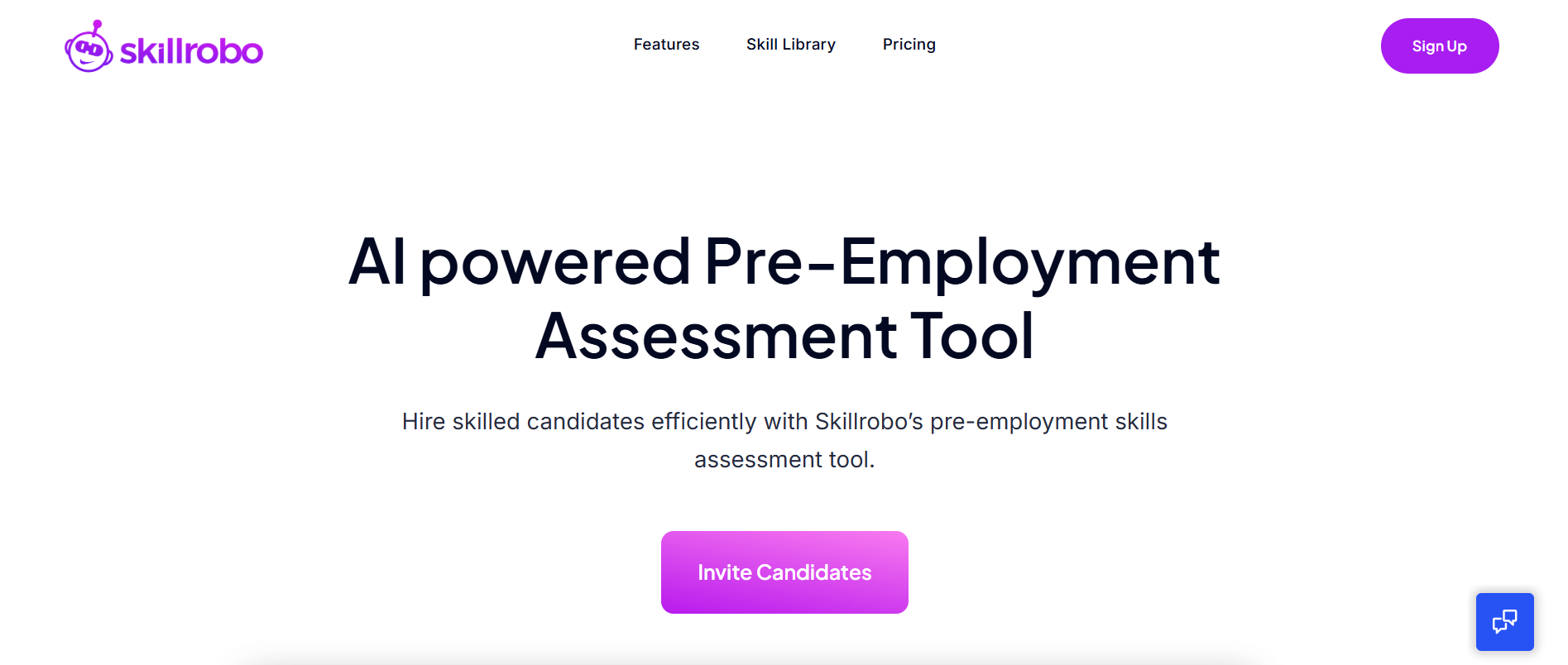
Skillrobo is the most preferred mass recruitment software that companies go for. The tool has the potential to lead hiring managers to high-quality candidates with proper skill sets. As an all-encompassing and comprehensive recruitment tool that will aid you in hiring skillful and proficient candidates, the platform will offer a seamless experience to both recruiters as well as candidates. The tool not only focuses on the role-based skill requirements, instead, it also incorporates behavioral and psychometric assessments for the candidates. Our platform allows the hiring managers to have in-depth insights into the abilities of each candidate and, at the same time, will be able to effortlessly manage and streamline the shortlisting process.
Key Features:
- Skillrobo prioritizes hiring based on the skills and talents of the candidates.
- The platform offers different skills tests ranging across industries like BPOs, KPOs, the automobile industry, and several others.
- Our platform offers 100+ in-built and customizable test templates.
- It also offers the space to generate role-based assessments, and recruiters can choose the preferred difficulty level.
2. iCIMS
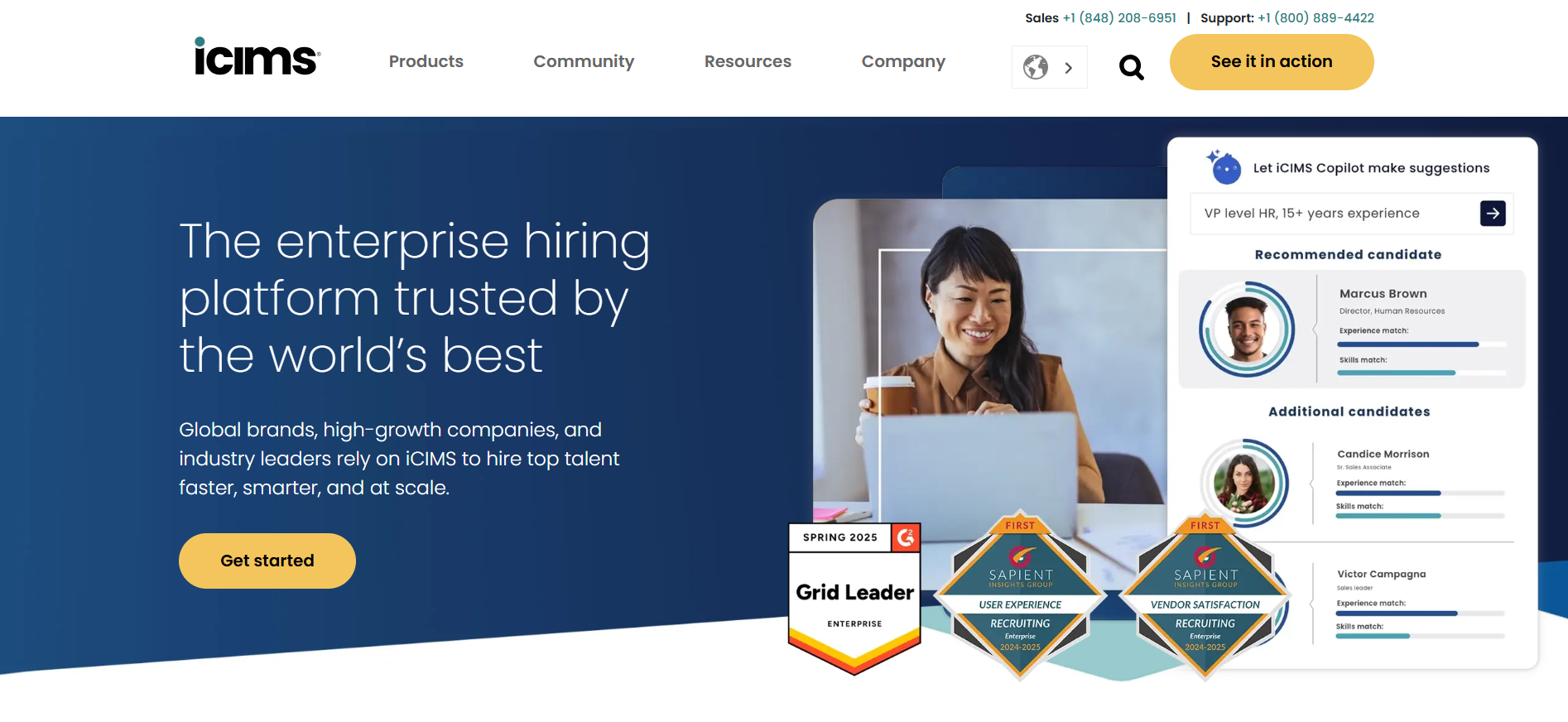
Source: iCIMS
iCIMS is specifically built to address the challenges of mass hiring. The tool mitigates problems like communication gaps caused by a large number of candidates. It also specializes in conducting pre-screening at scale.
Key Features:
- It supports customizable messaging capabilities that can reach not hundreds but thousands in an instant.
- It offers conversational AI support to connect with the candidates. This tool supports pre-screening activities through text, chat, and other means.
3. Phenom
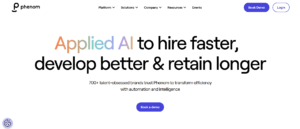
Source: Phenom
With the current labor market challenges, Phenom was developed as a solution for the high-volume hiring process. Phenom has established its efficiency by helping a retail organization hire 7000 workers in just two weeks
Key Features:
- Collaborating with Artificial Intelligence, scheduling and video assessments, and multiple-channel communication with the candidates can be achieved successfully.
- It is a CRM platform that offers personalized career websites and job recommendations based on the candidates’ profiles.
Conclusion
Remember, mass hiring is a collaborative process. It is a cross-functional and multi-dimensional process that requires utmost precision. A lot will be going on when the interviews start happening, and it often might not be as handy as traditional hiring processes. Hence, the efforts that go behind mass recruitment are humongous.
This form of strategic hiring becomes easier when the organizations have a clear idea of the current trends in the broader employment marketplace. It is high time that you make use of a collaborative tool like Skillrobo that will assist you in achieving a seamless mass-hiring experience.

Let us picture a situation where your organization needs new, skilled, and talented employees to drive productivity in all aspects. Mass hiring can be a perfect solution in such a situation. Mass hiring is not a new concept to any organization. There are several instances where an organization chooses this particular form of hiring.
Mass hiring is one of the best strategies to grow a company’s workforce rapidly in the hopes of making a powerful impact in the respective industry. However, this strategy comes with multiple challenges that might put the organizations at greater risk.
Hence, strategic planning is a prerequisite. This write-up will unfold the challenges faced by organizations in mass recruitment and also help explore some of the important mass hiring strategies that will offer recruiters a smooth hiring process.
Defining Mass Hiring
Popularly known as bulk hiring or high-volume hiring, the concept of mass hiring is the practice followed by organizations to fill a huge number of vacancies in a short period. This is practiced in several situations. For example:
- Due to the opening of any new department or branch at a different location, organizations have to fill a large number of positions
- In case there is a new client’s project launch or any future needs
- Due to some seasonal or event-based increase
- Backfilling in the case of high attrition
Mass hiring is a process that involves a lot of planning, organizing, delegation, infrastructure, and engagement across the different departments of the organization to acquire high-quality and skilled hires with excellent candidate experience.
The mass hiring process does not have a fixed number of hires. Every company has many candidates that they wish to onboard in the desired period. Mass hiring cannot be generalized to a fixed framework of definition.
For instance, consider a company with 20 employees that hires only one person each year. When they make 3 hires in one month, it can be classified as mass hiring. On the contrary, a big company like Google, which generally hires a thousand candidates every month, cannot be classified as mass hiring. Hence, the point to be noted is that the outcome is not what matters, but the process.
Mass Hiring vs. Traditional Hiring – How are they Different?
Firstly, a stark difference is that a traditional hiring process generally focuses on filling just one to a few vacancies at a given time, whereas mass hiring focuses on filling a large number of vacancies. Secondly, the time taken to complete both forms of hiring is different. According to the study conducted by the Society of Human Resources Management, traditional hiring on average takes approximately 42 days to fill a position. Take a look at the breakdown of days across different industries:
- Construction jobs – about 13 days
- Leisure and hospitality – about 21 days
- Health services – about 49 days
- Engineering – about 62 days
However, if we take a look at the mass-hire process, high-volume hiring of candidates is achieved in a much shorter span of time as the result of an immediate surge or geographic extension.
How Can Organizations Make Mass Hiring More Efficient?
As discussed earlier, there are several reasons why mass hiring takes place. Mass hiring can improve several aspects, like productivity, and also reduce the burden on the employees as tasks can be delegated and responsibilities can be reduced. However, these come along with certain challenges that may affect the smooth working of the processes. Mass hiring cannot be randomly conducted out of the blue. It demands proper foresight and strategic planning in hiring candidates.
Challenges of Mass Hiring
Mass hiring is a multi-layered process, and there are possibilities for several loopholes that can impact the efficiency of the process. Therefore, it is advised to acquaint yourself with some of the critical issues or challenges that could arise in this volume hiring process.
1. Lack of Strategy
It has been seen that most organizations try to go with the flow when they mass-hire. This is one major blunder they commit. Yes, the pressure of mass hiring is tremendous; however, it can be released with proper strategies and planning beforehand. A lack of strategy can cost so much of resources. It creates space for low-quality hires, and it will have grave consequences for the productivity of the organization.
2. Poor Governance and Communication
Mass hiring is a strategic process that requires collaboration and coordination of different departments. Effective governance is required to meet these standards. Without these aspects, a ruckus is generated, and accurate hiring becomes impossible. Improper governance and coordination can compromise the visibility, efficiency, and accuracy of the process. Furthermore, the challenge of including all the members of the team can be difficult. Systematic governance and uninterrupted communication are the solution to this problem.
3. Impact on Quality
As mass hiring is all about hiring in large numbers, often recruiters are seen to be compromising on the quality of the hires. With individual conversations with each candidate, time and energy are scarce for the recruiter as well. Due to the pressure of filling the open spots, the recruiters tend to close with a low-quality hire, hiring underqualified candidates, or even candidates who do not seem to fit the cultural thread of the organization.
4. Strain on Resources and Facilities
Mass hiring mainly depends on high-value professional and personal resources. The pressure keeps building up in conducting the process and the evaluation that follows. Furthermore, if the organization has not invested in tools like the Applicant Tracking System (ATS), the complexity increases with manual activities, including a huge amount of paperwork.
5. Candidate Management
Managing every candidate is a challenge. All of them have to be kept in the line of communication all the time. Due to limitations like time, the recruiters find it difficult to interact with all the candidates. This has a tremendous impact on the candidate experience as well.
6. Devising an Effective Job Description
Generating a simple yet effective job description is a task. The hiring managers have to devise descriptions for each role that is open for hire. If the team lacks basic resources and has skill gaps, it is going to pull down the hiring efficiency.
7. Visibility and Reach
The mass hiring process requires a volume of advertising and promotions to spread the word about the vacant positions. If the company has access to bulk hiring tools, the process is going to be smooth for the recruiters.
Strategies to Tackle Mass Recruitment Challenges
This might feel like we are reiterating, but let us remind you once again that mass hiring is all about planning. With the scope and speed involved in the mass recruitment process, there is a necessity to develop proper strategies to tackle the challenges and aid in properly planning the hiring process. Hence, let us dive into some of the essential strategies to consider while stepping into mass hiring.
1. Assemble an Expert Team
The first and foremost important step is to build a team to ensure a successful and efficient hiring process. This assembled team must be cross-functional and must be a dynamic combination of several recruiters, and also require the involvement of the existing employees to contribute to the process of hiring. Preferably, the team must include a good range of hiring managers for different roles and departments and different domain leads, and it is also ideal to include some subject matter experts to evaluate candidates on specific expertise by understanding the requirements of the job role, and simultaneously detect and identify threats during the initial stage itself of the process. Once the team has been built, discuss the roles, responsibilities, and the steps that go into volume hiring, and also ensure that the required tools are provided for proper collaborative hiring.
2. Make a Strategic Plan of Execution
As the team is finally set up, the next step is devising the plan of execution. The plan must focus on the hiring strategies that will be implemented in the selection process. The plan devised must be based on the concept of ‘SMART’ planning. The ‘SMART’ planning makes sure that all the activities are specific, measurable, achievable, relevant, and time-bound. Following this strategy will stop you from taking unnecessary and irrelevant steps.
Additionally, there are questions you must be able to answer to build a successful hiring plan.
- What does your expected business growth curve look like, and what is its impact on the hiring process?
- What specific job roles are you looking forward to filling?
- What is the time frame fixed for filling the open job positions?
- What is your budget, and what should be the ideal cost for each hire?
Answering these questions would give you an idea of what and how to plan the mass recruitment process.
Additionally, recruiters can simplify the task of the mass hiring workflow with a standard recruiting funnel. The recruiting funnel can guarantee a smooth mass recruitment.
- Awareness – market the open job role
- Attraction – establish a strong brand image
- Interest – engage and interact well with the candidates
- Applying – make the application process easy
- Assessment – use a pre-employment assessment tool to ease the evaluation and shortlisting process
- Interviewing – conduct effective one-way or one-on-one interviews
While preparing for the mass hiring, it is important to think about the challenges that tag along. This is where the experts in the team can use their expertise to handle such situations. The key point is that the team must prepare to face any situation at any time.
3. Create a Compelling Job Description
A compelling job description is what pulls job seekers to apply for the open role. The description must specify and highlight the key responsibilities and the desired skills to avoid confusion in the hiring process. Involving your employees is a crucial factor in the recruitment process. A well-defined job description with all the requirements has to be developed and proofread to ensure that nothing. The points to be noted to create a job description are:
- The job description must be easy to read and understand. Avoid unnecessary jargon.
- Do not exaggerate any requirements with unrealistic standards. Do not set any extremely strict parameters.
- Be minimalistic with words and be to the point of what your organization requires in a candidate.
It is ideal to add a section that explains what the applicants gain, along with the working environment and culture of your organization. The values of the organization need to be communicated properly, and prepare your candidates for what they are in for.
4. Update the Company’s Careers Page
Maintaining a careers page is essential for the company, especially in the corporate world. A career site conveys more about the industry and the company in general. The page must be updated with the company’s mission, vision, or corporate values. It is ideal to be truthful about your experience in setting up this organization and the important milestones achieved. The image and brand value of the organization are a priority to the candidates.
A survey conducted by LinkedIn revealed that 71% of the candidates perform deep research about the company before applying. So, your career sites must be updated regularly with recent activities.
5. Enhance your Brand Presence
If you ask us how to hire a lot of employees quickly, our answer to you is to build a brand image and make your presence known in the industry. A review-based survey conducted by Glassdoor revealed that nearly 86% of job seekers research company reviews and ratings before deciding to apply there. So, it is extremely important to build a brand image for your organization. Additionally, with a strong brand presence, the employer can reduce the cost per hire. Some common tips to elevate your brand presence can be as follows:
- A well-developed and attractive career website
- Have a consistent participation in job fairs
- Host events and improve brand awareness and reach
- Make use of advertising strategies in industry journals and locations
- Maintaining rapport with hiring networks/recruiters or building partnerships with local agencies.
- Maintaining communication through eye-grabbing social media presence, blog posts, snippets, video testimonials, etc.
6. Promote Mass Hiring Advertisements on Social Media and Advertising Channels
Social media and other advertising channels are some of the powerful tools to promote your organization. Not only for promotion, but these platforms can also be used for reaching out to top candidates. Job advertisements can be posted on the website and all social media handles. Recruiters can also take aid from their professional networks to onboard the top-skilled and talented job seekers.
7. Create a Smooth and Convenient Application Process
Smoothening the application process is crucial as it is cumbersome to handle such a humongous volume of hires. Mass hiring is time and energy-consuming for both the organization as well as the candidates. Hence, streamlining and optimizing the process is important. As a high-volume hiring strategy, here are some ways in which you can reduce your burden as well as improve the candidate experience.
- Giving proper and clear communication regarding the expectations of the process.
- Providing all the important information for the smooth functioning of the process.
- Leverage the right technical tools like video interview tools, pre-employment assessment tests, etc., to heighten the candidates’ experience.
- Collecting feedback regarding the application process and incorporating improvements in the future.
8. Automate the Recruitment Process
Streamlining and optimizing the recruitment process through automation is an ideal solution to adopt. Recruitment automation enhances the efficiency of the process by taking over certain manual processes that are time-consuming. Especially in mass hiring and mass job searches, a huge number of applicants apply for each job role. Think about a situation where the recruiters have to go through numerous resumes and shortlist candidates. However, most often, more than half of the resume bulk would be eventually deemed unqualified or underqualified. Therefore, it is clear that so much time is wasted in that process. Automated recruitment software can perform resume screening
process and much more, for example:
- Resume analysis and screening
- Scheduling of interviews and performing follow-ups
- Sending automated notifications and reminders regarding interviews
- Automatic sending of tests to the candidates
- Tracking of the application status
- Automatic compilation and ranking of the candidates
- Collecting internal feedback
- Real-time reporting and surveillance
Skillrobo is an efficient online pre-employment skills assessment that can skillfully streamline all the tasks in the recruitment process.
9. Leverage the Best Pre-Employment Assessment Tests
Using pre-employment assessment tests allows the testing process to be conducted anywhere, anytime. With the support of the tech tool, high-volume screening and testing can be achieved without much hassle. The inbuilt and customizable question library lets users conduct assessments easily. Automatic report generation saves time and removes bias from the evaluation process. Some essential aspects are:
- Allows recruiters to make quick and data-driven decisions.
- Negates all sorts of interviewers’ biases.
- These platforms can be used across industries. A pre-employment tool like Skillrobo has 100+ tests across industries, ranging from programming roles to behavioral assessments.
10. Boost your Candidate Sourcing Process
Mass hiring’s ultimate goal is to hire in bulk, for which HR professionals can adopt one of the most popular hiring techniques, like Applicant Tracking System (ATS). It is an apt tool to erase the difficulties in keeping tabs on all the candidates simultaneously. The hiring managers are empowered when collaborating with a system like ATS. Skillrobo is a dynamic combination of assessment tools and application tracking systems. The hiring managers and the team manager will have proper control over the complete process.
11. Build a Talent Database
One of the most important hiring strategies is building and using a robust talent database. In a mass hiring environment, there will be a coming together of a huge talent pool of candidates. There is a high probability that the majority of the talent pool might not be the right fit for most of the job roles. However, these candidates could fit into any open roles in the future. Hence, to make the most out of the recruitment process, creating and maintaining a database of the talent pool from the hiring program can come in handy in the future. Due to this, more resources like money and time can be saved. There are several hiring tools, like Skillrobo, that come with a cloud-storage system and can easily store data in categorized databases. For example, a resume database will carry all resume data in it and can be easily accessed by managers or recruiters.
12. Ensure Timely Communication During the Process
During mass hiring, maintaining clear, consistent, and transparent communication is difficult. Due to high participation, it is a challenge to achieve a continuous flow of communication. In such situations, the use of the right tools can help maintain uninterrupted communication to a great extent. Most of the communication can be achieved with the platform itself. For example, the test status of the candidates is visible to the recruiters, and they do not have to seek the test taker.
A point to be noted is that communication should not stop once the recruitment process is completed. Follow-ups with the rest of the candidates can be advantageous to the organization. Leveraging tech-based tools for sending bulk mails, customized messages, reminders, etc. This further aids in emphasizing your brand presence among the candidates.
13. Have a Structured and Objective Interview Process
Interaction with the candidates is another crucial touchpoint to be taken care of. The better the efficiency and effectiveness of the recruitment process, the better the success of the hiring program. Templated interviews can achieve your desired smoothness in the whole process. There is evidence that suggests a structured framework and templated interview improve the quality of hiring.
For a structured, templated interview, the employers have to properly communicate to the hiring team the questions to be asked and the criteria to be used. The recruiting team must be well-versed in their area of expertise and work towards the common objective of the team. They must have a common scoreboard for specific job roles and a standardized interview kit consisting of sample questionnaires, core job requirements, scorecards, and candidate profiles/resumes. This will help the recruiters to remain objective, efficient, and complete the recruitment process. The following approaches can be used for interviewing candidates:
14. Rapid-Fire Interview
The focus of this interview approach is to evaluate the instant response caliber of the applicants. This is one of the shortest interview methods that reveals the first thoughts in the minds of the candidates. The questions asked are most often tricky; however, there is a possibility that applicants are judged by their initial impressions, creating chances of biased hiring. The solution here is that proper standards for the process must be shared with the recruiters for objective evaluation.
15. One-Way Video Interview
In a one-way video interview, the candidates are asked to send self-recorded videos answering the interview questions. Following this, the recruiters can view and assess the candidates at a later stage at their convenience.
16. One-on-One Interview
This is the most common method of interview, where both the interviewer and the candidates are present simultaneously and engage in conversation. It is a two-way communication method where the hiring manager assesses the knowledge and skills of the candidates. At the same time, the candidates can also get familiarized with the organization and the working culture from the interviewer. A one-on-one interview approach is generally the last stage of the hiring process, after which the candidates are either onboarded or rejected.
17. Group Interviews
The group interview approach has a few advantages over one-on-one interviews. The first and foremost thing is that one-on-one interviews are time and energy-consuming. The second advantage over any other interview method is that the recruiting manager gets the opportunity to assess the candidates on how well they communicate with others and their ability to be assertive and persuasive in making their points valid.
18. As Your Existing Employees for Referrals
Seeking referrals from your employees is the best high-volume hiring strategy that an organization can adopt. Studies have interpreted that candidates hired through referrals tend to serve more years in the business organization, and there is a considerable reduction in the average cost per hire as well. This is a win-win strategy for the employers.
Generating a reward-based employee referral program can influence and encourage existing employees to recommend job seekers from their social or professional circles. Remember, the key here is to invest in a transparent and viable referral program and reward that will bring the success you intend.
19. Review your Hiring Process and Realign with your Goals
Once the hiring process is done, it is time to review and determine the efficiency of the process. By reviewing your process, you get to detect gaps and errors and optimize the process accordingly next time. Having metrics can help in the proper analysis of the process. Some key metrics you can use for review are:
- Cost per hire
- Source of hire
- Total Time taken to hire
- Conversion rates
- Drop-off points
How a Pre-employment Assessment Tool can help
A pre-employment assessment tool can smooth the process of mass hiring. The tasks within the process are streamlined and optimized, and also improve the quality of the hire, all achieved in less time. Here are some of the advantages hiring managers can acquire.
- Proper strategies can be devised for mass hiring by using assessments available on the platform.
- Reduces the time taken to hire the right candidates.
- The communication between the hiring manager and the candidates becomes impactful and flawless.
- The platform helps in increasing the interview-to-hire ratio as the recruiters can land on the right candidate quickly with instantly generated assessment reports.
- In-depth screening increases the chances of choosing the right candidate.
Top 3 Mass Recruitment Software to Think About
1. Skillrobo

Skillrobo is the most preferred mass recruitment software that companies go for. The tool has the potential to lead hiring managers to high-quality candidates with proper skill sets. As an all-encompassing and comprehensive recruitment tool that will aid you in hiring skillful and proficient candidates, the platform will offer a seamless experience to both recruiters as well as candidates. The tool not only focuses on the role-based skill requirements, instead, it also incorporates behavioral and psychometric assessments for the candidates. Our platform allows the hiring managers to have in-depth insights into the abilities of each candidate and, at the same time, will be able to effortlessly manage and streamline the shortlisting process.
Key Features:
- Skillrobo prioritizes hiring based on the skills and talents of the candidates.
- The platform offers different skills tests ranging across industries like BPOs, KPOs, the automobile industry, and several others.
- Our platform offers 100+ in-built and customizable test templates.
- It also offers the space to generate role-based assessments, and recruiters can choose the preferred difficulty level.
2. iCIMS

Source: iCIMS
iCIMS is specifically built to address the challenges of mass hiring. The tool mitigates problems like communication gaps caused by a large number of candidates. It also specializes in conducting pre-screening at scale.
Key Features:
- It supports customizable messaging capabilities that can reach not hundreds but thousands in an instant.
- It offers conversational AI support to connect with the candidates. This tool supports pre-screening activities through text, chat, and other means.
3. Phenom

Source: Phenom
With the current labor market challenges, Phenom was developed as a solution for the high-volume hiring process. Phenom has established its efficiency by helping a retail organization hire 7000 workers in just two weeks
Key Features:
- Collaborating with Artificial Intelligence, scheduling and video assessments, and multiple-channel communication with the candidates can be achieved successfully.
- It is a CRM platform that offers personalized career websites and job recommendations based on the candidates’ profiles.
Conclusion
Remember, mass hiring is a collaborative process. It is a cross-functional and multi-dimensional process that requires utmost precision. A lot will be going on when the interviews start happening, and it often might not be as handy as traditional hiring processes. Hence, the efforts that go behind mass recruitment are humongous.
This form of strategic hiring becomes easier when the organizations have a clear idea of the current trends in the broader employment marketplace. It is high time that you make use of a collaborative tool like Skillrobo that will assist you in achieving a seamless mass-hiring experience.



